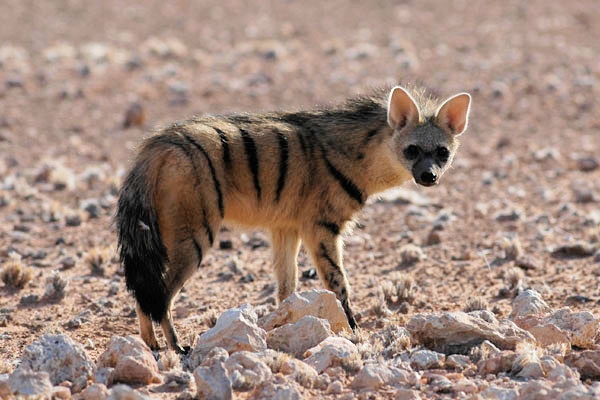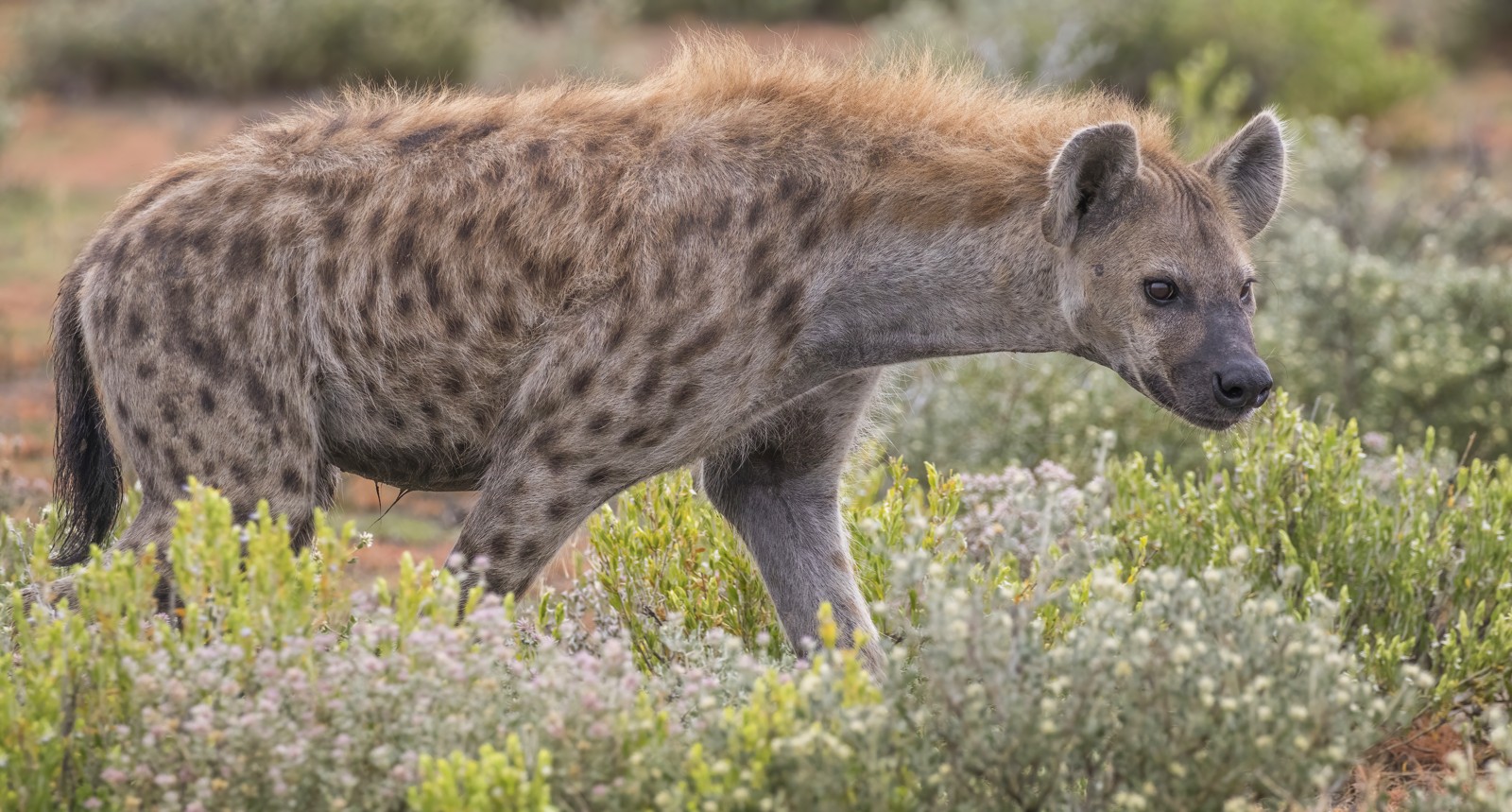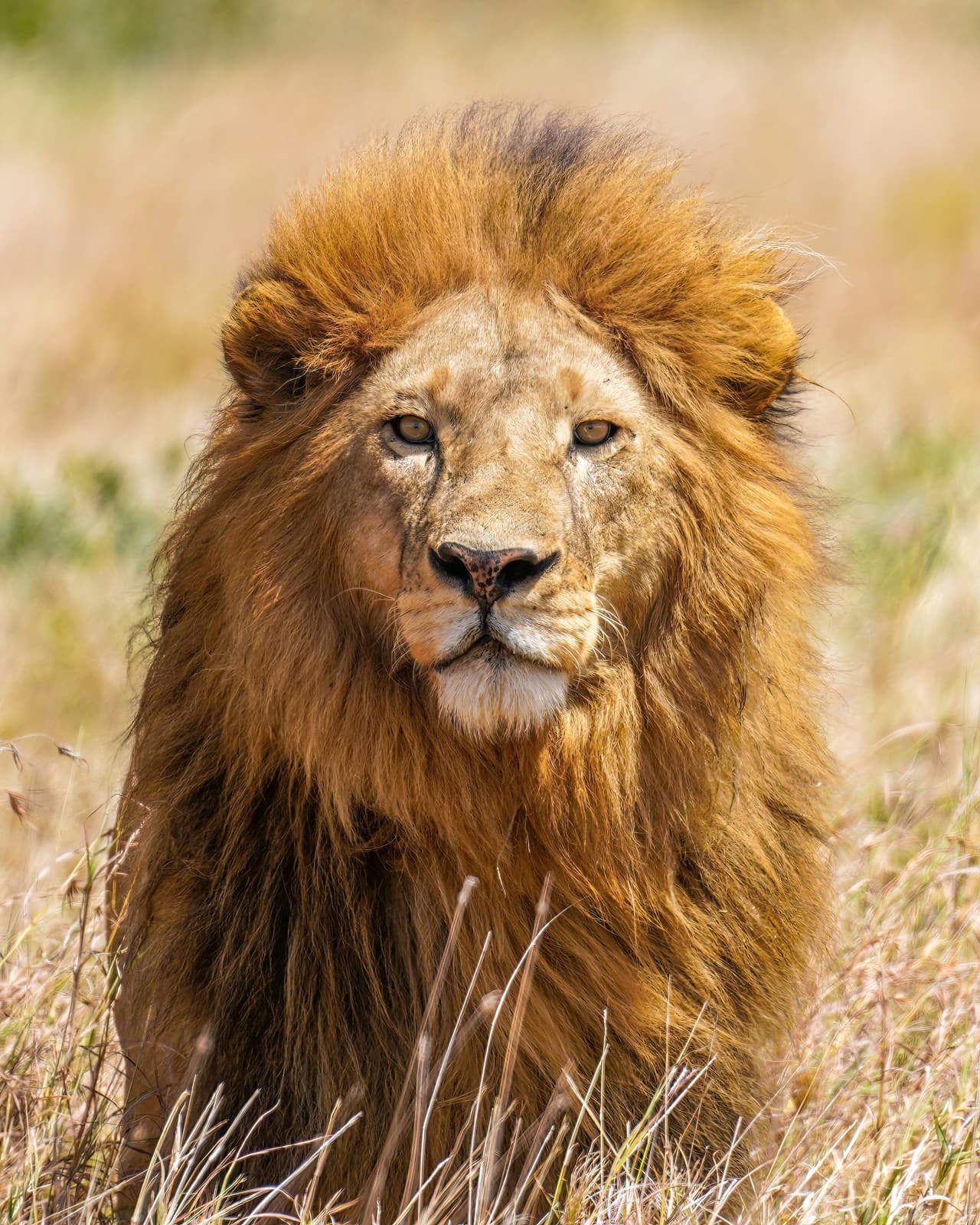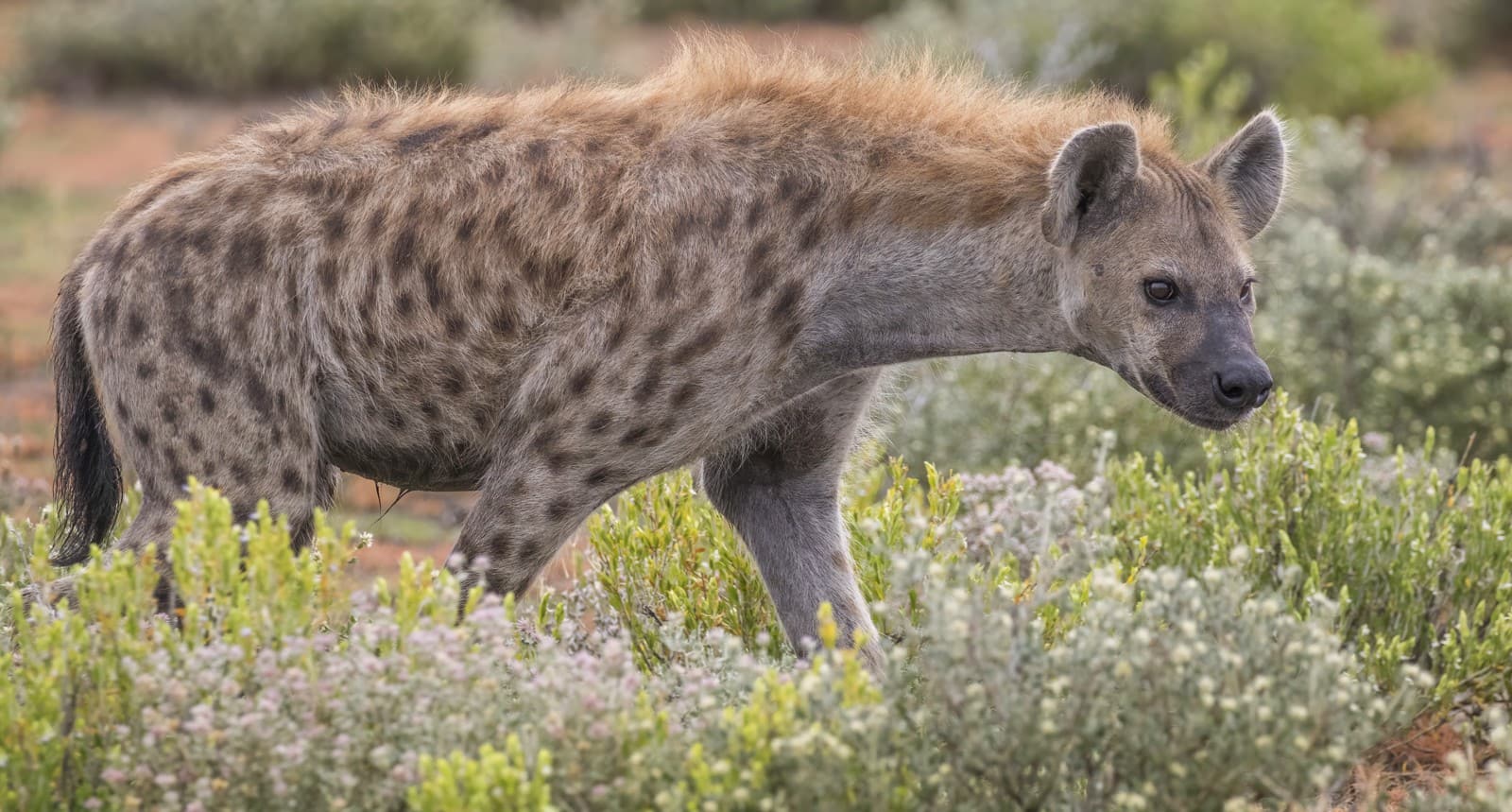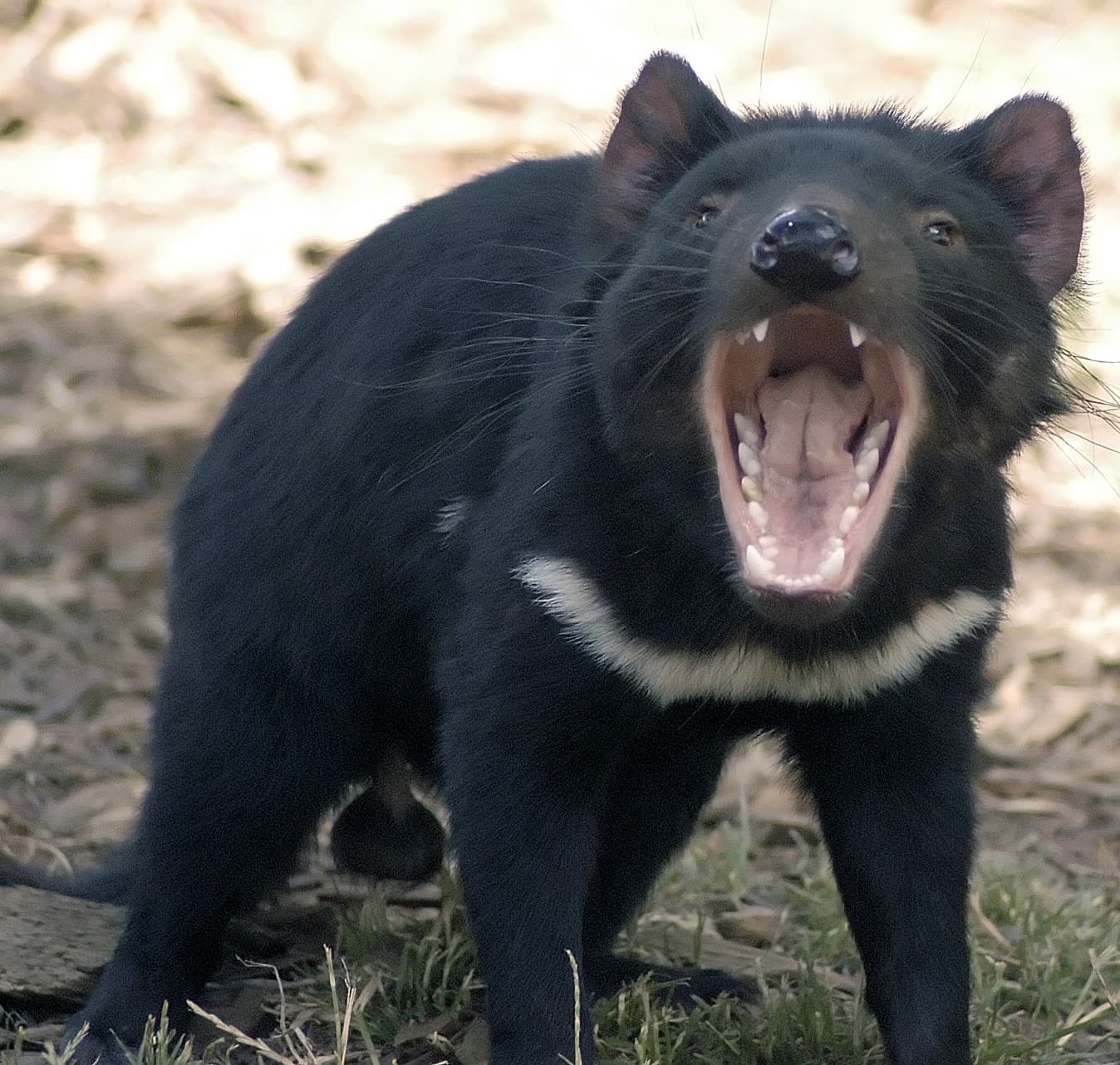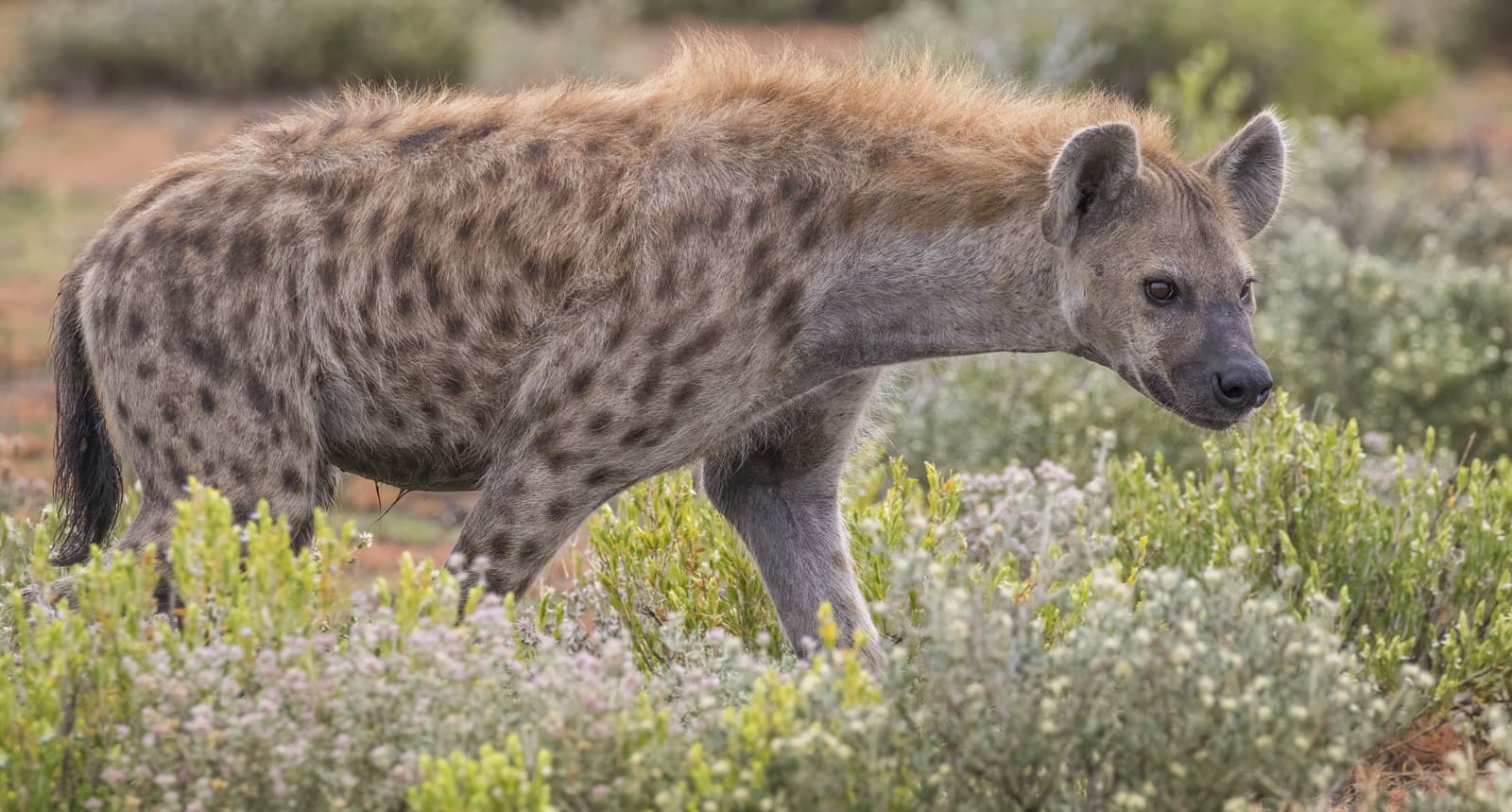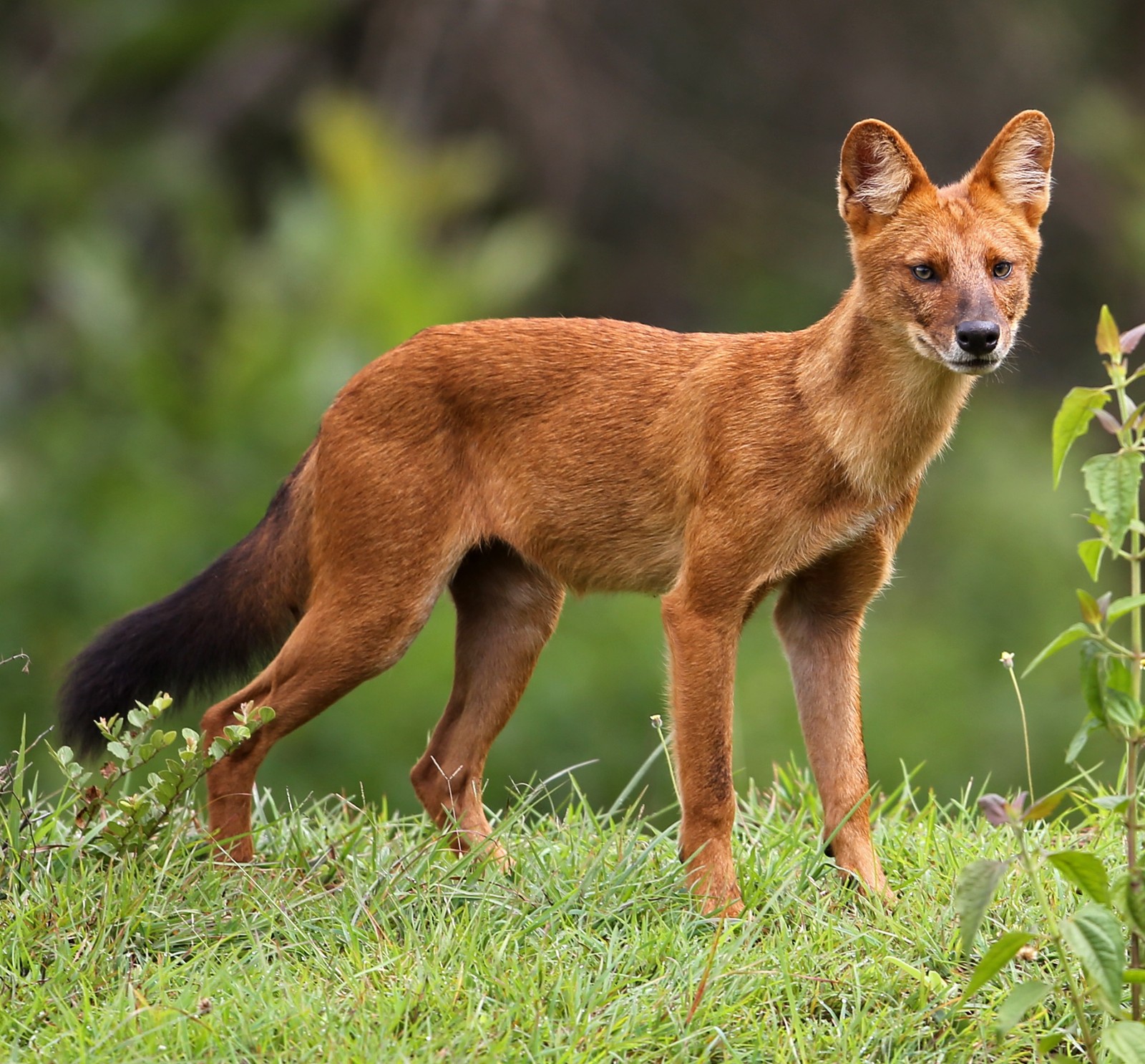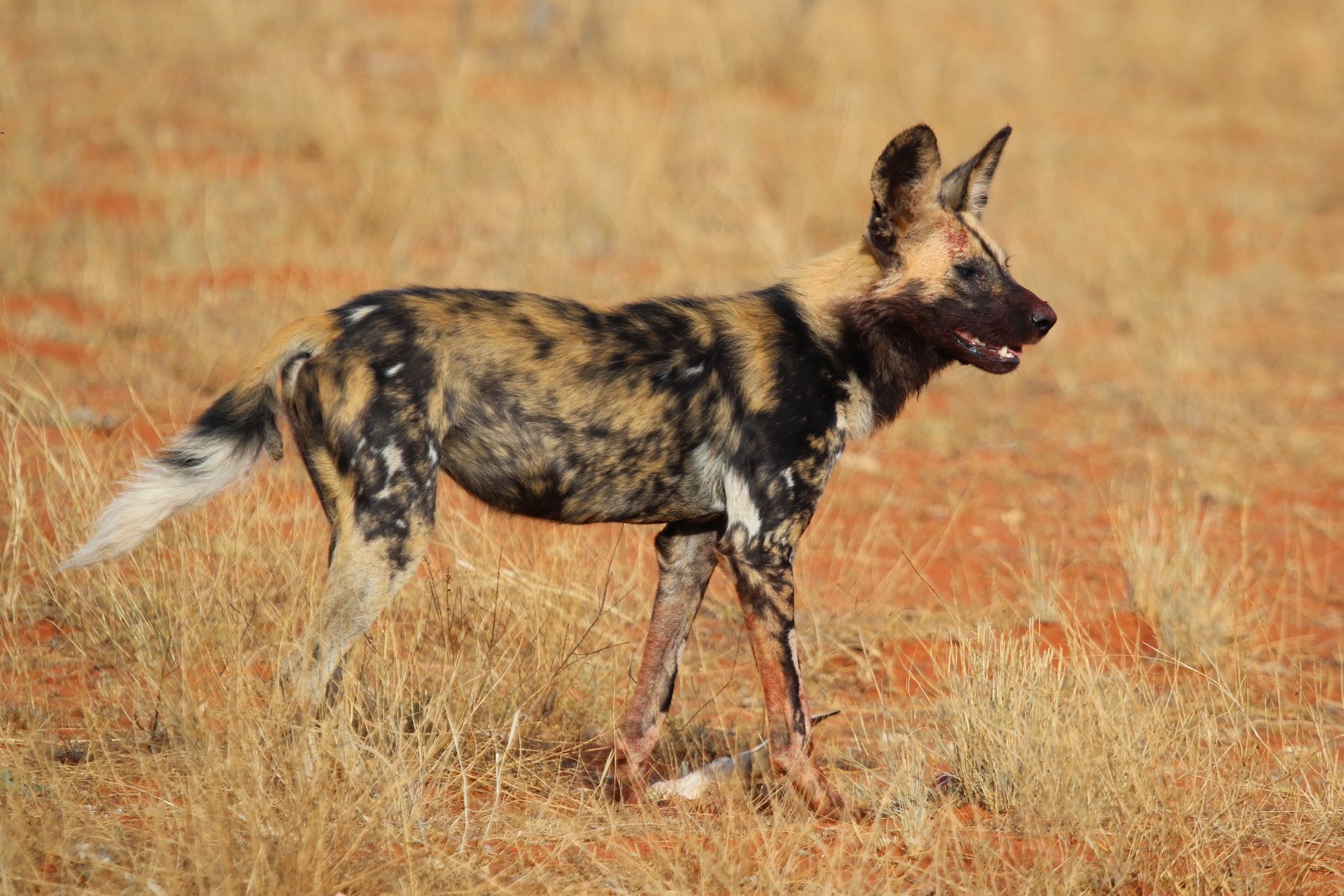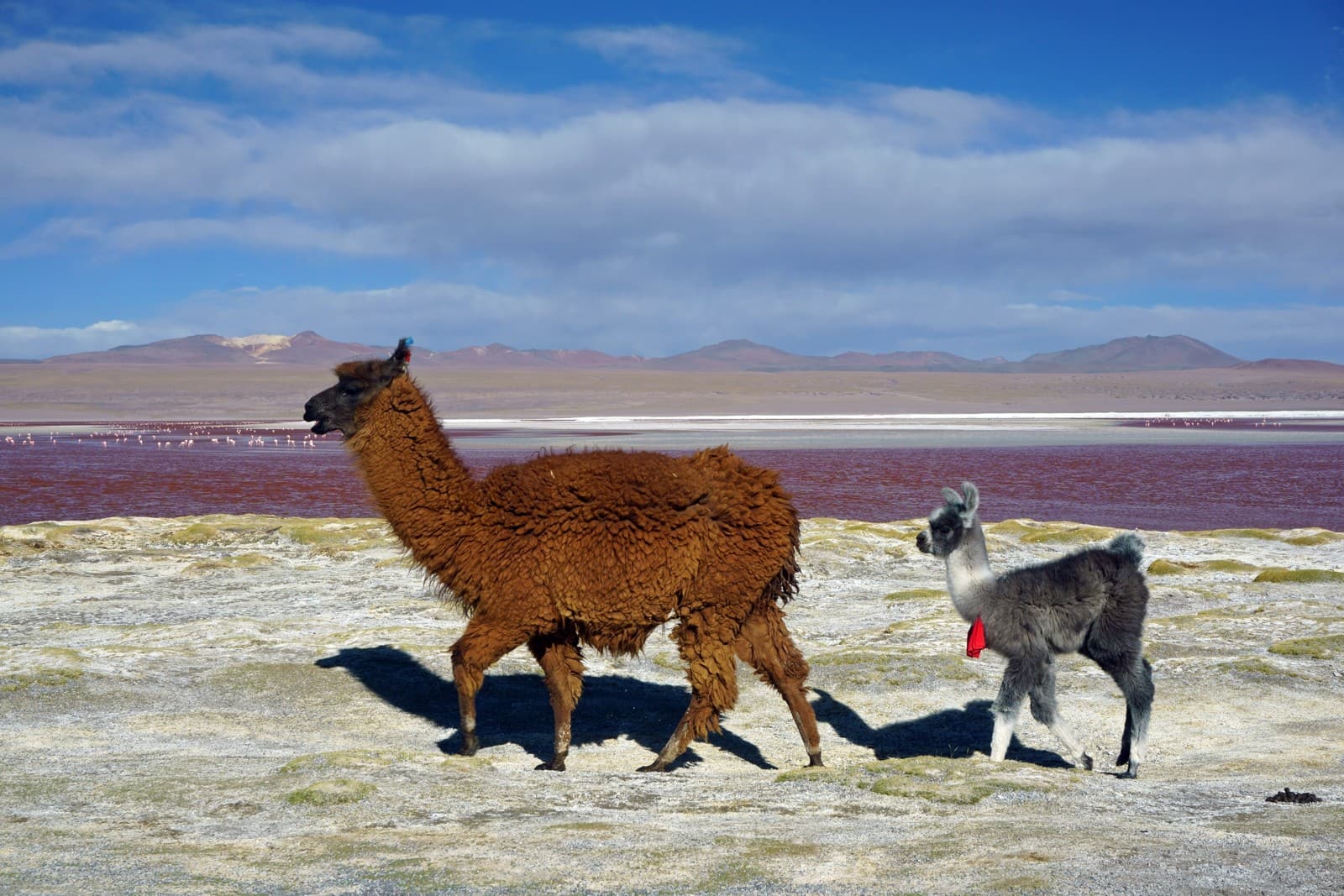Hyena vs African Wild Dog: A Complete Comparison
When comparing hyenas vs African wild dogs, we encounter two of Africa’s most successful predators, each with remarkably different hunting strategies and social structures. While spotted hyenas can weigh up to 190 pounds (86 kg) and hunt in clans of up to 80 members, African wild dogs typically reach only 60-75 pounds (27-34 kg) but achieve the highest hunting success rate of any African predator at 85%.
These distinctive carnivores have evolved different approaches to survival on the African savanna. Hyenas are powerful opportunistic hunters and scavengers with bone-crushing jaws generating 1,100 pounds of force per square inch, while African wild dogs are endurance hunters that chase prey to exhaustion with remarkable stamina and coordination.
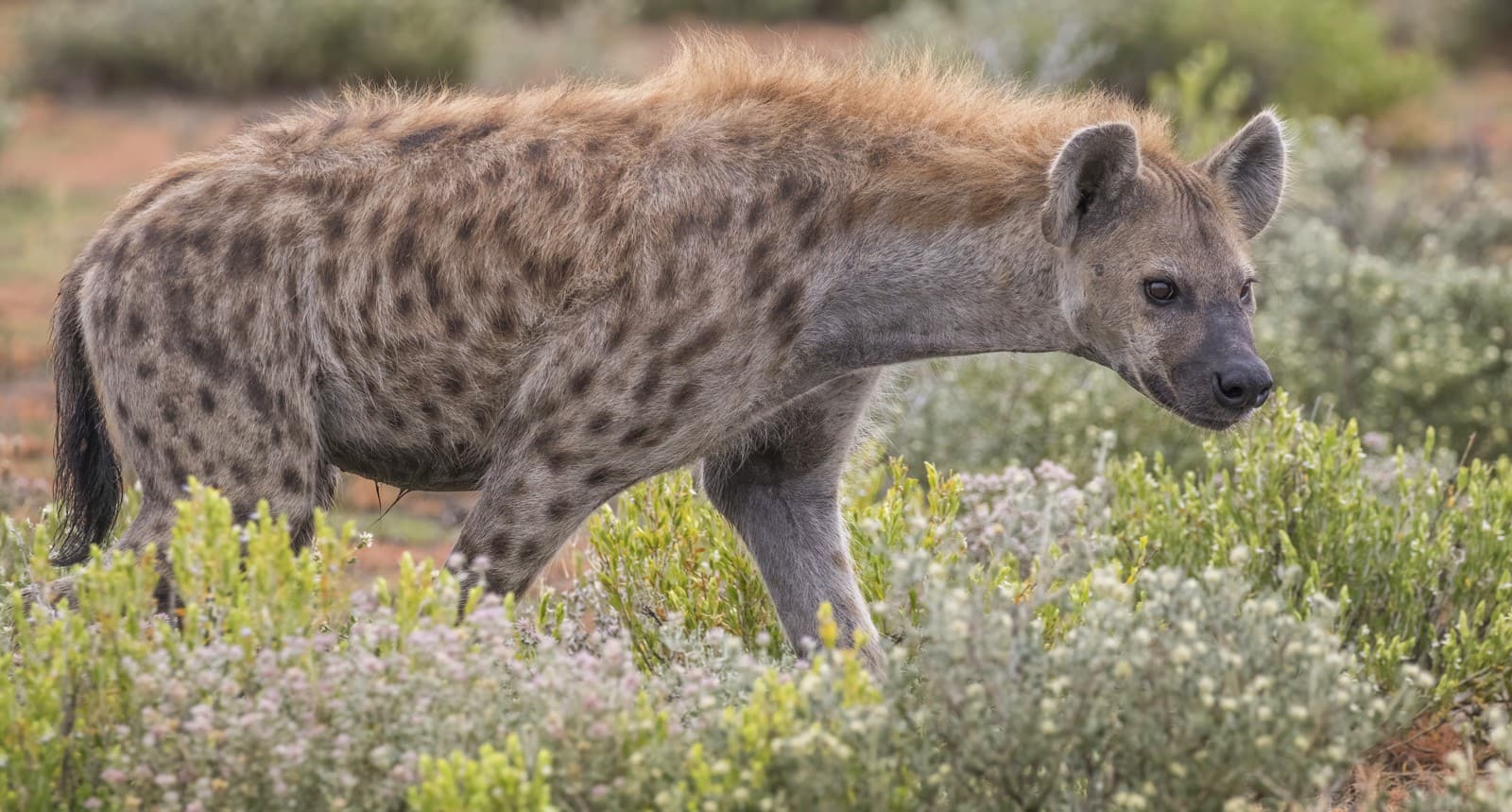
© Charles J. Sharp / CC BY-SA 4.0
The spotted hyena demonstrates its characteristic muscular build and powerful frame, adaptations that allow it to both hunt and scavenge effectively across African landscapes. These features distinguish it markedly from its canine competitor, the African wild dog.
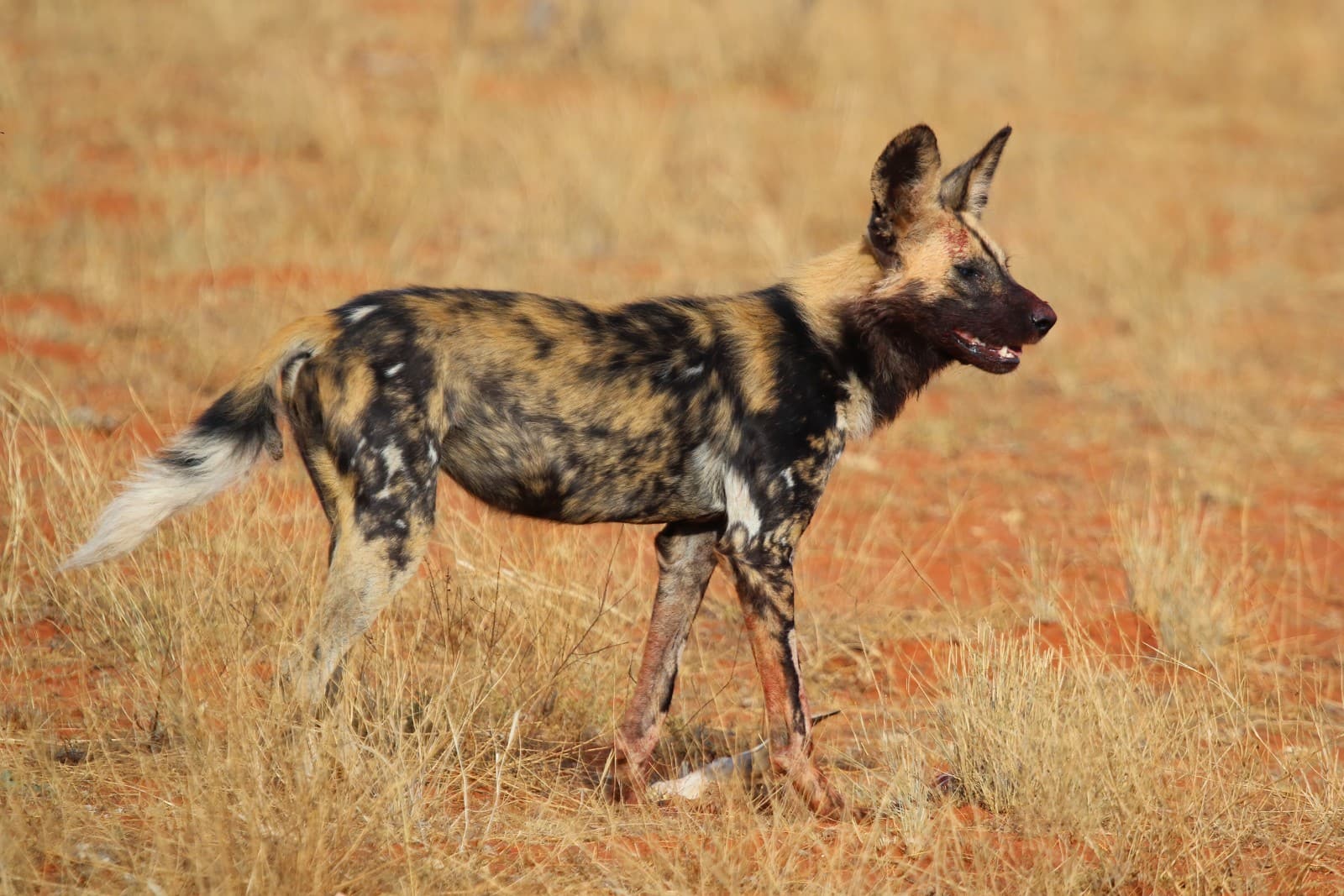
© Charles J. Sharp / CC BY-SA 4.0
The African wild dog exhibits its lean, athletic build and distinctive tri-colored coat pattern. These features reflect its specialized hunting strategy that relies on stamina and pack coordination rather than raw power like the hyena.
Key Physical and Behavioral Differences
| Feature | Hyena | African Wild Dog |
|---|---|---|
| Weight | 90-190 lbs (40-86 kg) | 40-75 lbs (18-34 kg) |
| Group Size | 10-80 members | 6-20 members |
| Hunting Success Rate | 25-30% | 80-85% |
| Top Speed | 37 mph (60 kph) | 44 mph (71 kph) |
| Bite Force | 1,100 psi | 317 psi |
| Lifespan | 12-25 years | 10-12 years |
Hunting Strategies and Prey Selection
African wild dogs and hyenas employ distinctly different hunting techniques. Wild dogs are precision hunters, relying on sophisticated pack coordination and endurance to exhaust their prey through long chases, often covering distances of 3-6 miles (5-10 km). Their hunting success rate of 85% surpasses all other African predators.
Hyenas, conversely, combine opportunistic hunting with powerful scavenging abilities. Their robust jaw structure allows them to crush and consume bones that other predators must leave behind. Hunting success rates for hyenas average 25-30%, but they compensate through their ability to exploit multiple food sources.
Social Structure and Pack Dynamics
Hyena Clans
Spotted hyena clans operate under a unique matriarchal system where females outrank and outweigh males. These hierarchical societies can include up to 80 individuals, with complex social relationships governing hunting rights and territory defense.
Wild Dog Packs
African wild dogs maintain smaller, more egalitarian packs typically numbering 6-20 members. Unlike hyenas, both males and females disperse from their natal groups, with females typically leaving at 2.5 years and males remaining longer with their birth pack.
Territory and Habitat Competition
Both species require extensive territories for survival, leading to frequent competitive interactions. Hyenas typically maintain territories of 15-400 square miles (40-1,000 square kilometers), while wild dog packs range across even larger areas of 150-800 square miles (400-2,000 square kilometers).
Who Would Win in a Confrontation?
When analyzing potential confrontations between hyenas and African wild dogs, several factors come into play:
- Group Size: Hyena clans typically outnumber wild dog packs
- Individual Size: Hyenas outweigh wild dogs by 2-3 times
- Bite Force: Hyenas possess significantly stronger jaws
- Tactical Approach: Wild dogs show greater coordination but typically avoid confrontation
In direct conflicts, hyenas generally dominate due to their superior size and strength, forcing wild dog packs to surrender kills or avoid areas of high hyena density. However, wild dogs’ greater mobility and stamina allow them to thrive in areas where they can avoid frequent hyena encounters.
Conservation Status and Threats
African wild dogs face more severe conservation challenges, classified as endangered with only 6,600 individuals remaining in the wild. Hyenas maintain larger populations, with spotted hyenas classified as least concern, though both species face habitat loss and human conflict challenges.
The survival of these remarkable predators depends on protecting their remaining habitats and maintaining the large, connected landscapes they require for hunting and territorial behaviors. Understanding their differences and ecological roles helps inform effective conservation strategies for both species.
